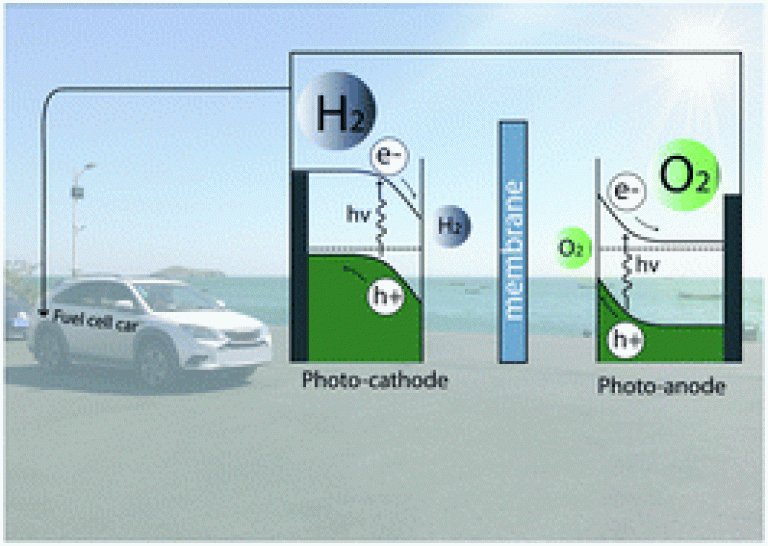New Paper in Chemical Society Reviews
30 June 2017
We are pleased to announce a new paper entitled "Photoelectrochemical devices for solar water splitting - materials and challenges" published by our group member Chaoran Jiang et.
 al and our collaborator in Dalian Institute of Chemical Physics, Chinese Academy of Sciences Prof Tao Zhang et.al in Chemical Society Reviews.
al and our collaborator in Dalian Institute of Chemical Physics, Chinese Academy of Sciences Prof Tao Zhang et.al in Chemical Society Reviews.
It is now available online: Chem. Soc. Rev., 2017, DOI:10.1039/C6CS00306K.
Abstract
It is widely accepted within the community that to achieve a sustainable society with an energy mix primarily based on solar energy we need an efficient strategy to convert and store sunlight into chemical fuels. A photoelectrochemical (PEC) device would therefore play a key role in offering the possibility of carbon-neutral solar fuel production through artificial photosynthesis. The past five years have seen a surge in the development of promising semiconductor materials. In addition, low-cost earth-abundant co-catalysts are ubiquitous in their employment in water splitting cells due to the sluggish kinetics of the oxygen evolution reaction (OER). This review commences with a fundamental understanding of semiconductor properties and charge transfer processes in a PEC device. We then describe various configurations of PEC devices, including single light-absorber cells and multi light-absorber devices (PEC, PV-PEC and PV/electrolyser tandem cell). Recent progress on both photoelectrode materials (light absorbers) and electrocatalysts is summarized, and important factors which dominate photoelectrode performance, including light absorption, charge separation and transport, surface chemical reaction rate and the stability of the photoanode, are discussed. Controlling semiconductor properties is the primary concern in developing materials for solar water splitting. Accordingly, strategies to address the challenges for materials development in this area, such as the adoption of smart architectures, innovative device configuration design, co-catalyst loading, and surface protection layer deposition, are outlined throughout the text, to deliver a highly efficient and stable PEC device for water splitting.
 Close
Close

